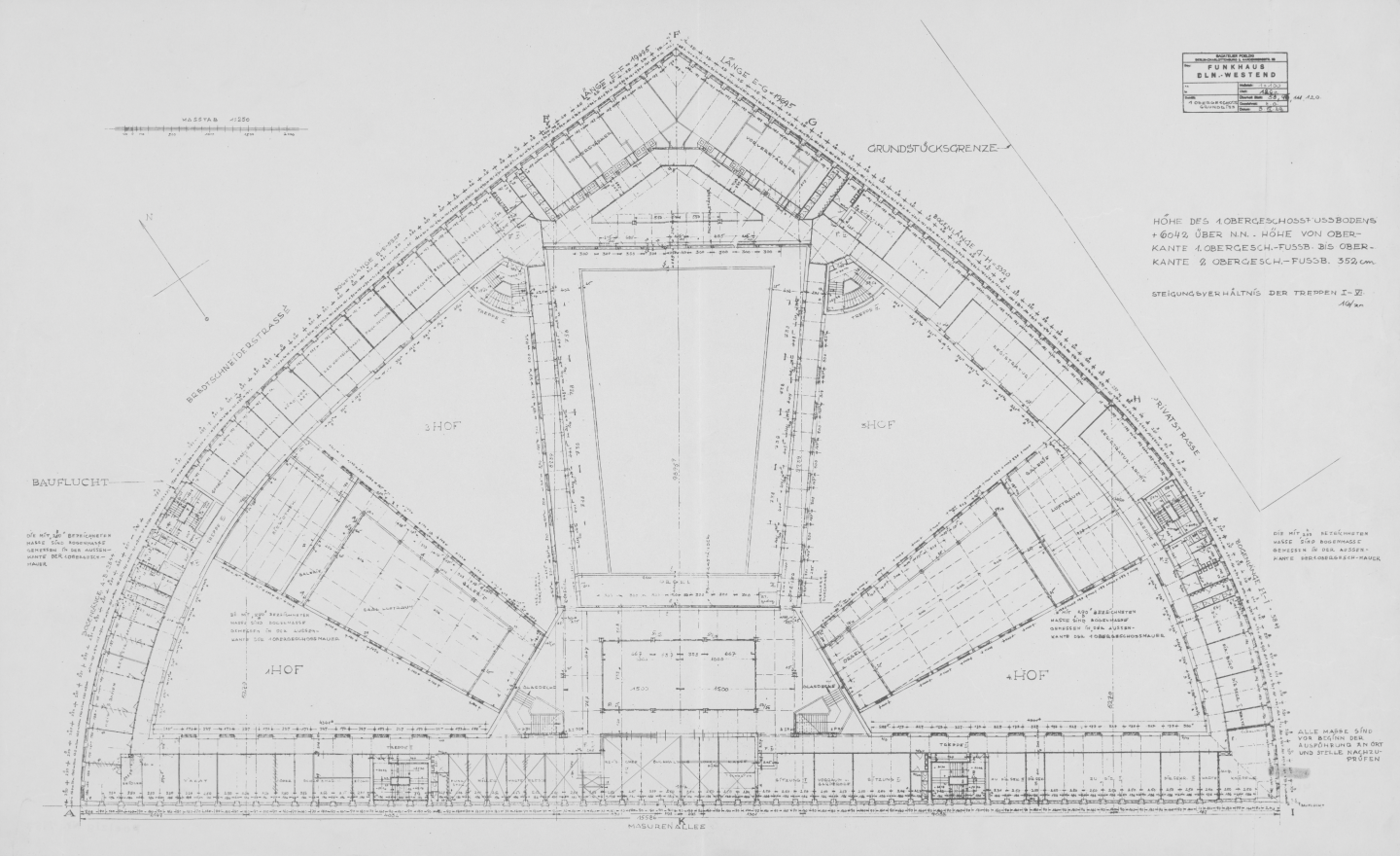
In 1945, having occupied German territory, Soviet troops made two strategic moves: they dismantled the Deutschlandsender III radio transmission tower, the single tallest structure at the time in Europe, and they seized the Haus des Rundfunks in West Berlin, a monumental building designed by Hans Poelzig. These moves were crucial both symbolically and technically, as together they sparked what would become a veritable radio war between the Eastern and Western blocs during the Cold War. In this lecture, Thiermann will present Radio-Activities, his forthcoming book, in which he investigates this spatial conflict by interrogating the political, technological, and environmental dimensions of architecture at a time when buildings began to interact with the remote transmission of information.
By its very nature, the medium of radio promised to evaporate the intrinsic material aspect of architecture; in fact, it did no such thing. By way of transscalar analyses, in the book, he pays particular attention to Berlin’s buildings, walls, transmission towers, factories, research institutions, and territorial organisations during the Cold War period, which enabled the production, reproduction, and transmission of sonic-based content across the divide of the Iron Curtain. In doing so, he reveals underresearched continuities between politics, technology, media, and architecture, reframing notions of national and transnational boundaries.
In Radio-Activities, Thiermann interrogates the status and agency of buildings during a period—not unlike today’s—of increasingly hyperconnected, ubiquitous, and apparently invisible modes of coexistence.
The Berlage Sessions is a thematic seven-part seminar series focusing on scholarly research and critical approaches to the history and theory of architecture and urban design. This spring’s series, entitled “In and Out of Scale,” examines select ideas and projects that reconsider the scalar relationships of the built environment, from radio transmission and television broadcasting to the model and the chair. Organized from the large to small scale, topics will include the remote transmission of information in the Cold War; televangelical spaces—worship sites, churches, hospitals, university campuses—that were either retrofitted to accommodate television or designed explicitly for its technology between the late 1950s and the early 1980s; the various interpretations and misinterpretations of “artificial land” in postwar Japan; how the construction of new garden cities not only scaled up building commissions but also created new local economies; on the staging of miniature landscapes for large-scale photographs; how scale models were used as descriptive instruments in nineteenth-century London; and a consideration of how the Indian planter’s chair affirms past influences while also sensitively converses with the present. Speakers will include Rachel Julia Engler, Jesse Honsa, Casey Mack, Sarita Sundar, Alfredo Thiermann, Matthew Wells, and Edwin Zwakman.
People
Alfredo Thiermann is an architect and Assistant Professor for History and Theory of Architecture at the École polytechnique fédérale in Lausanne. Through his practice and theoretical research, he explores the intersection between architecture and different media, from sound installations and film scenography to single-family houses, public buildings, and large-scale infrastructures. He has previously taught at Harvard University, Pontificia Universidad Católica de Chile, and other institutions. Alfredo’s work has been published in Harvard Design Magazine, A+U, Revista ARQ, TRACE magazine, Zeppelin, Potlatch, Real Review, Thresholds, Archithese, GTA Papers, Frankfurter Allgemeine Zeitung, and BauNetz, and has been exhibited at the Museum of Modern Art in New York, Museo Nacional de Bellas Artes in Santiago, the Istanbul Design Biennial, gta exhibitions in Zurich, and the Venice Art Biennale among other institutions. He has been the recipient of the Rome Prize of the German Academy in Rome.
Alfredo studied architecture, receiving his professional degree from the Pontificia Universidad Católica in Chile and a Masters degree from Princeton University. He received his doctoral degree from the Eidgenössische Technische Hochschule (ETH) in Zurich. He has been a fellow at the Max Planck Institute for the History of Science, at the Canadian Centre for Architecture in Montreal, and at the Collegium Helveticum in Zurich. He is the author of Radio-Activities: Architecture and Broadcasting in Cold War Berlin published by MIT Press. He lives, works, and takes care of Pedro Tristán and Juan Nataniel between Lausanne and Berlin.